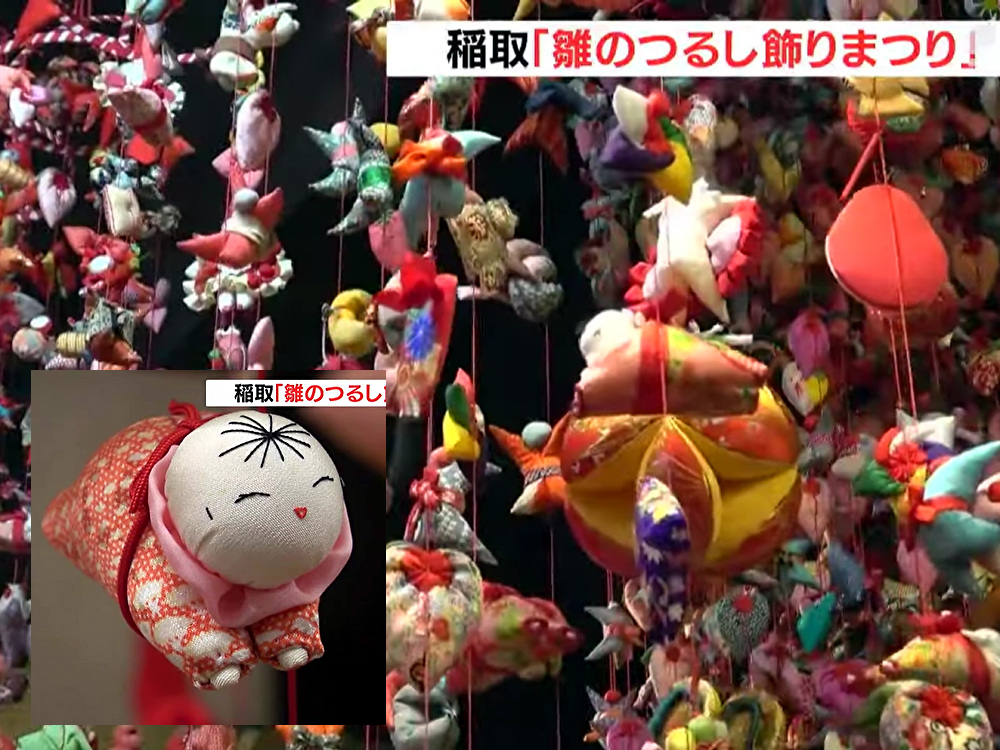
The scene of the ‘Hina no Tsurushi Kazari Matsuri’ (Hanging Doll Decoration Festival) that began on the 20th in Inatori, Higashi-Izu Town, was featured on NHK television. The history of ‘Tsurushi Hina’ in Inatori is ancient, dating back to the late Edo period. At that time, Hina dolls were considered luxury items, beyond the reach of common people. Unable to display Hina dolls, mothers, grandmothers, aunts, and even neighbors who couldn’t afford such dolls brought together scraps of their old kimonos. They crafted small dolls with various motifs symbolizing the health and happiness of girls. Connecting them with strings, they started the tradition of ‘Hina no Tsurushi Kazari,’ a unique Japanese sewing craft, which has been passed down to the present day.
The culture of Hina no Tsurushi Kazari, originating in Inatori, is said to have spread to various regions afterward. Particularly, the ‘Sagemon’ in Yanagawa, Fukuoka Prefecture, the ‘Kasa-fuku’ in Yamagata Prefecture, and the ‘Hina no Tsurushi Kazari’ in Izu Inatori are known as the ‘Three Great Hanging Decorations of Japan,’ attracting numerous visitors each year.
20日から始まった東伊豆町稲取の「雛のつるし飾りまつり」の様子がNHKテレビでも放映されました。稲取における「つるし雛」の歴史は古く、江戸時代後期にまで遡ると言われています。当時、ひな人形は高級品のため庶民には手の出せないものでした。そこで雛人形を飾ることのできない一般家庭のお母さんやおばあちゃん、叔母さんから近所の人たちまで、みんなで自分達のお古の着物の端切れなどを持ち寄り、女の子の健康と幸せの意味合いを込めた様々なモチーフの小さな人形を少しずつこしらえて、紐でつないだ独自の和裁細工「雛のつるし飾り」の伝統が始まり、現在まで受け継がれてきたと言われています。
稲取から始まった雛のつるし飾りの文化は、その後各地に広まったと言われています。中でも、福岡県柳川の「さげもん」、山形県の「傘福」、そして伊豆稲取の「雛のつるし飾り」は、「全国三大吊るし飾り」と呼ばれ、年々多くの人が訪れています。
